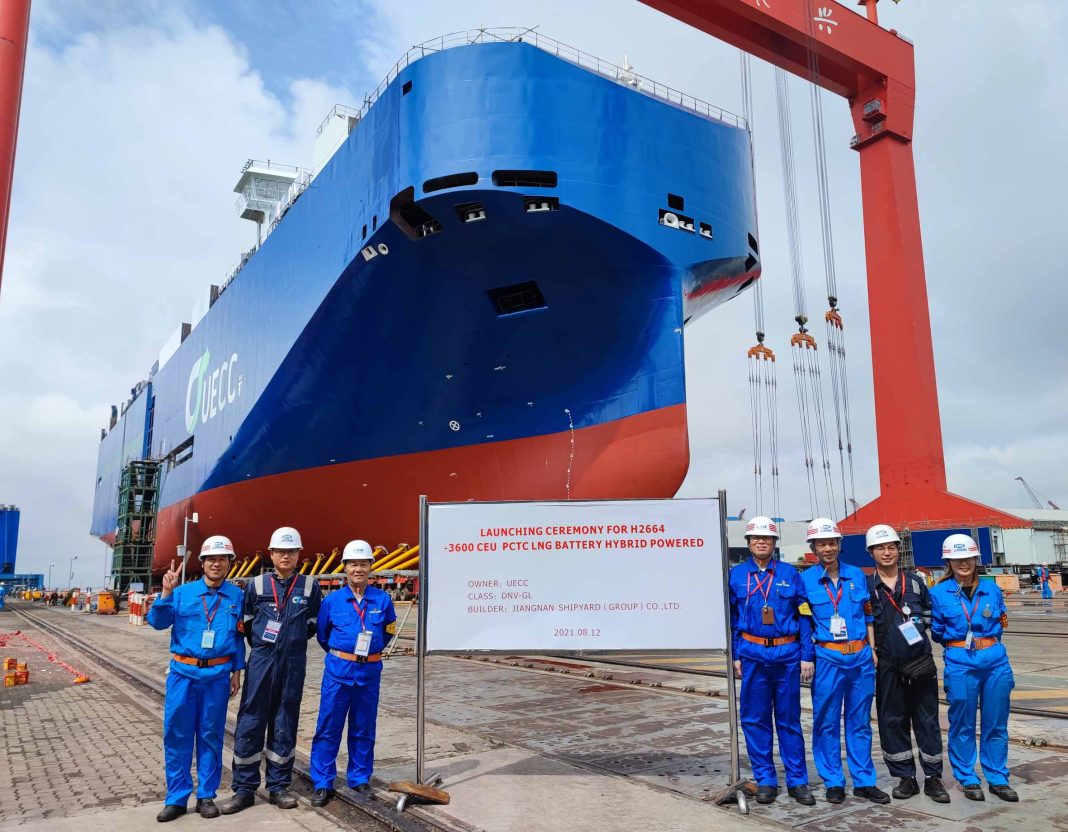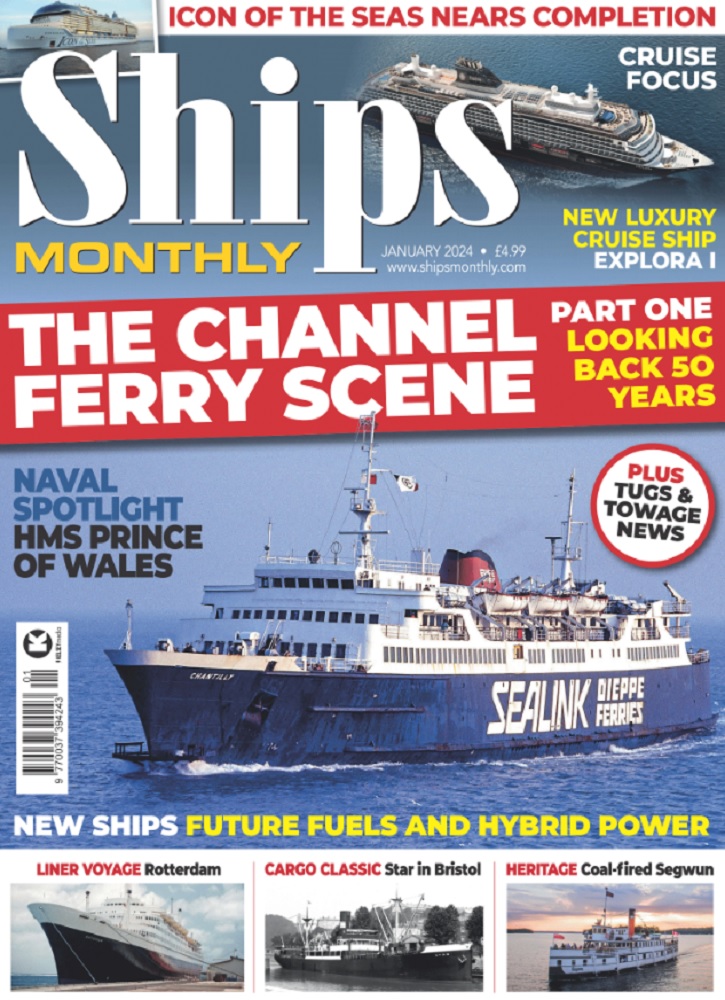UECC’s ambitious effort to upgrade its fleet with low-carbon vessels remains on track with the launch during August 2021 of the second in a series of three LNG battery hybrid newbuilds at a Chinese yard.
The latest newbuild pure car and truck carrier (PCTC) was launched at Jiangnan Shipyard just over a year after the first steel was cut as the yard and shipowner have overcome manpower and logistical challenges due to the Covid-19 pandemic to maintain the delivery schedule.
Hull number H2664 hit the water in a launch ceremony at the Shanghai yard on 16 August and is due for final delivery along with the third vessel in the first half of 2022, while the first unit launched earlier this year is set to be delivered later this autumn after final commissioning.
UECC has been a front-runner in adapting hybrid technology for the car carrier shipping segment in pursuit of lower CO2 emissions, building on a pair of pioneering dual-fuel LNG-powered PCTCs that have now been in commercial operation for the past four years.
“The intention was to further improve on these two E-class vessels, Auto Eco and Auto Energy, by rationalising fuel consumption through the use of hybrid battery power,” explains head of ship management and newbuilding Jan Thore Foss.
He says the yard “responded to the challenge” by employing Jiangnan Shipyard Group’s internal design firm to carry out engineering work to adapt the hybrid technology, supplied by WE Tech of Finland, for the ground-breaking newbuild project.
The shaft generator enables the vessel to recharge its batteries while at sea so it can run the bow thruster in/out of port solely on battery power, contributing to reduced emissions in line with port authority requirements.
Battery power on the new vessels will improve operational efficiency and further reduce emissions through peak shaving, in addition to handling partial accommodation load and driving auxiliary equipment.
The use of a battery hybrid solution will enable UECC to exceed the IMO target to reduce carbon intensity by 40% from 2008 levels within 2030.
Emissions of carbon dioxide will be reduced by around 25%, SOx and particulate matter by 90% and NOx by 85% from the use of LNG, while the newbuilds will also meet the IMO’s Tier 3 NOx emissions limitations for the North Sea and Baltic Sea.


